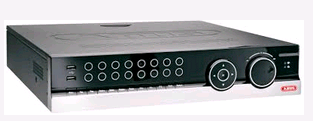
NVRs began as PC-based solutions, harnessing the powers of a CPU. However, in recent years, these are no longer the mainstream products on the market. A couple of years ago, standalone NVRs were introduced into the market, catering to the increasing popularity of network cameras. Since then, their popularity has risen in the industry and standalone NVRs are claiming their spot as the mainstream video storage product. Another NVR develop in recent years is in response to community- and city-wide surveillance projects. The NVRs that cater to this market segment are large with powerful data processing capabilities.
PC-BASED VS. STANDALONE
While both PC-based and standalone NVRs record video, store video, and manage cameras, recorded content, viewing and archiving, the differences between the two lie in how they operate and the features they provide.Standalone NVRs are smaller and more compact in size compared to PC-based NVRs. In terms of performance, standalone NVRs operate on SoC and usually have one or more DSPs for video compression, decompression, and a CPU for other functions.
On the other hand, PC-based NVRs utilize the CPU for video compression/decompression, viewing and recording content, and managing cameras. Currently, standalone NVRs are better suited for systems where the number of cameras is within the limits of an NVR’s capacity. PC-based NVRs are decidedly more powerful in processing data, and offer much more flexibility in storage scalability, compared to standalone NVRs. […]
Source www.asmag.com

